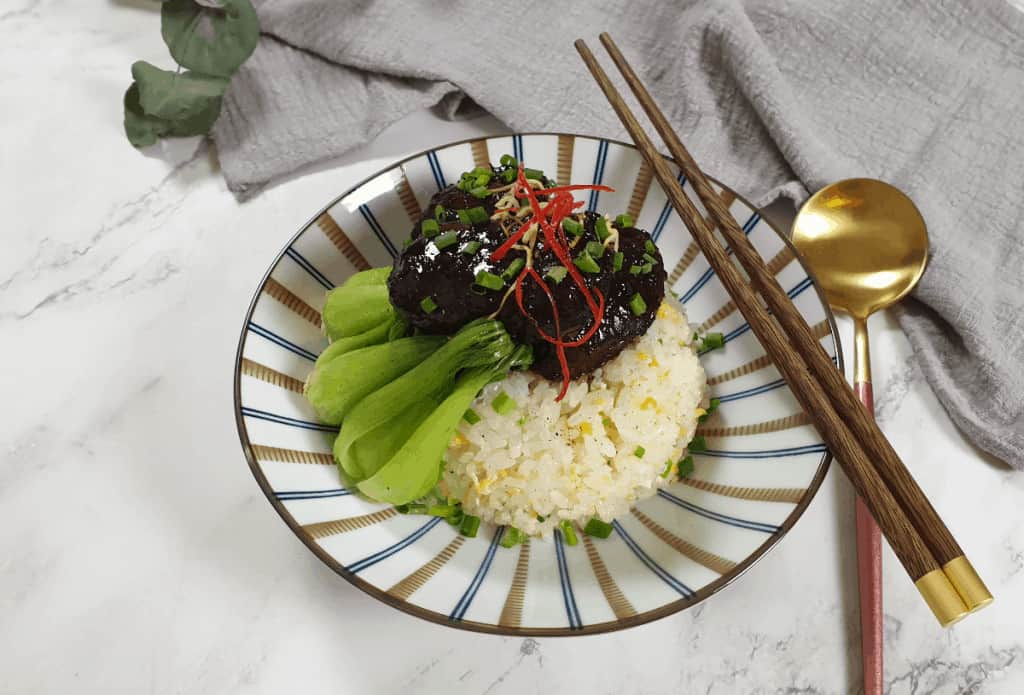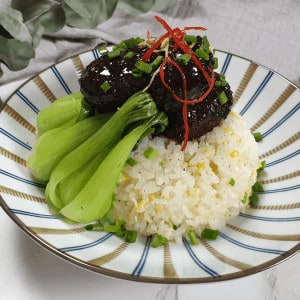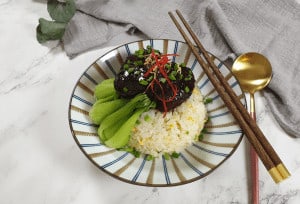Glazed Pork Cheeks with Japanese Flavours
Do you also have days where you just long for Asian flavours? Guess what… we have them often but this time we wanted something special so we are using some Japanese inspiration.

Pork cheeks are lean and inexpensive but not always readily available at your butcher. Be aware that you might have to order them in advance. Because the size will reduce during cooking, a good portion size is 2 or 3 cheeks per person.
Sous vide requires advance planning and patience due to the overnight cooking, but the preparation time is not very long. We elaborate more about this specific sous vide technique in another post.
Serve the glazed pork cheeks with some rice and bok choy to finish off in true Asian style.
Also check other pork dishes.

Sous vide glazed pork cheeks with Japanese flavours
The sous vide technique requires advance planning and patience due to the overnight cooking.
EQUIPMENT (click pictures for details)
Ingredients
- 12 pcs pork cheeks approx. 1kg
- 1 tbsp Chinese five spice
For the sauce
- 5 tbsp honey
- 5 tbsp mirin
- 150 ml soy sauce
- 4 tbsp rice vinegar
- 1 tbsp sesame oil
- 3-4 cm chopped fresh ginger
- 2 pcs chopped garlic cloves
- 1 tsp Chinese five spice
Instructions
- Trim the pork cheeks by removing the outer fat and nerves.
- Season with the Chinese 5 spice, salt and pepper.
- Place the pork cheeks in the sous-vide bag and cook in the water bath at 64° C for 12 hours. (overnight).

- After 12 hours, refrigerate the pork cheeks.
- To prepare the sauce, combine all ingredients in a pan and reduce until thickened. The texture must be syrupy and shiny. Season to taste and sieve the sauce.
Glaze the cheeks
- Open the plastic bag and transfer the pork cheeks onto a baking tray.
- Reheat for 10 minutes in the oven to 160°C. This process will melt the natural gelatin around the cheeks.
- Add the pork cheeks to the sauce and gently caramelize over a medium to low heat until the sticky sauce makes the cheeks look shiny.

Notes
- Rice vinegar is less acidic and has a very delicate sweet flavour.
- You can substitute it with apple cider vinegar.
- If you can’t find mirin, a sweet Japanese rice wine, you can substitute it with pale dry sherry wine.
Nutrition for 1 portion
Calories: 182kcalCarbohydrates: 34gProtein: 5gFat: 4gCholesterol: 2mgSodium: 2261mgFiber: 1gSugar: 27gVitamin C: 1mgCalcium: 25mgIron: 2mg
Tried this recipe?Let us know how it was! #culinaryambition

